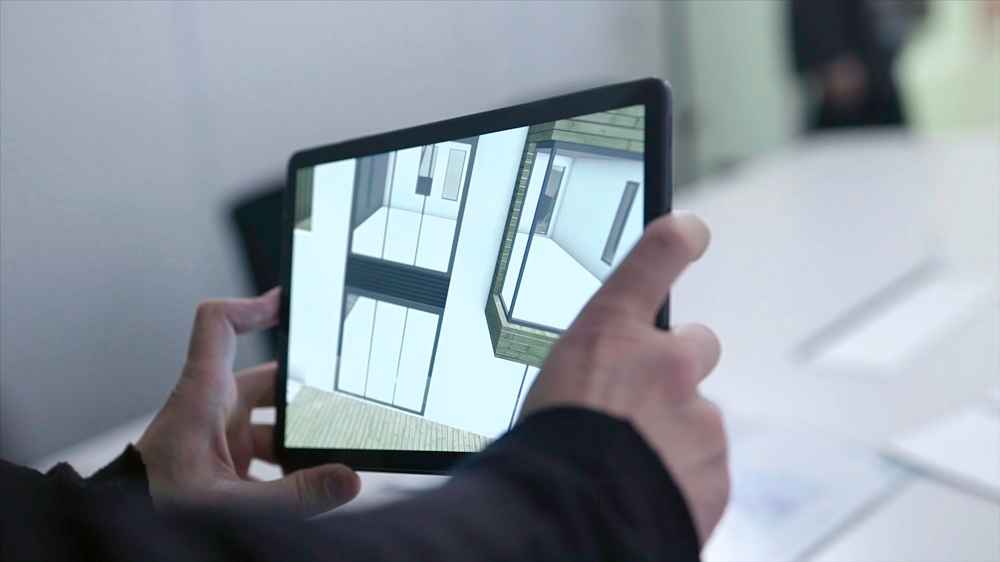Architectural Visualization
What is Architectural Visualization?
Architectural visualization is the process of creating realistic, visually compelling representations of architectural designs, spaces, and environments using computer-generated imagery (CGI) and other digital media techniques. It involves the use of 3D modeling software, rendering engines, and digital imaging tools to create photorealistic renderings, animations, virtual tours, and interactive experiences that communicate the look, feel, and functionality of architectural projects before they are built.
At its core, architectural visualization aims to bring architectural designs to life in a visually compelling and immersive manner, enhancing understanding, engagement, and appreciation of architectural ideas and concepts.
Why learn Architectural Visualization nowadays?
Learning about architectural visualization is essential for architects, designers, visualization artists, and other professionals involved in the design and construction industry who seek to effectively communicate design ideas, engage stakeholders, and enhance the decision-making process through visual storytelling. In today’s digital age, where advances in technology have revolutionized the way architectural projects are conceived, presented, and realized, a solid understanding of architectural visualization is critical for staying competitive and relevant in the industry. Here are several reasons why learning about architectural visualization is important:
Firstly, architectural visualization enables architects and designers to effectively communicate design ideas and concepts to clients, stakeholders, and the general public in a visually compelling and immersive manner. By creating photorealistic renderings, animations, and virtual experiences, architects can convey the look, feel, and functionality of proposed designs, helping clients visualize the end result and make informed decisions about design options, materials, and finishes.
Secondly, architectural visualization facilitates design exploration and iteration by enabling architects to quickly and easily visualize and evaluate different design options and scenarios. By creating 3D models and renderings of design concepts, architects can test and refine ideas, explore alternative solutions, and identify opportunities for improvement, leading to better-informed design decisions and more successful project outcomes.
Work in Architectural Visualization
Engaging in architectural visualization offers diverse career opportunities for individuals passionate about combining artistic creativity with technical proficiency to communicate architectural ideas and concepts. Here are some key areas where professionals can find fulfilling work in architectural visualization:
· 3D Visualization Artist: 3D visualization artists specialize in creating photorealistic renderings, animations, and virtual experiences that showcase architectural designs and spaces. They use 3D modeling software, rendering engines, and digital imaging tools to create highly detailed and visually compelling visuals that accurately represent the look, feel, and functionality of proposed architectural projects.
· Visualization Studio Manager: Visualization studio managers oversee the operations and production workflows of architectural visualization studios, ensuring that projects are delivered on time, within budget, and to the highest quality standards. They manage project schedules, allocate resources, and coordinate teams of artists, animators, and designers to meet client deadlines and project requirements.
· Virtual Reality (VR) Developer: VR developers specialize in creating immersive, interactive virtual reality experiences that allow users to explore architectural designs and spaces in real-time. They develop VR applications and experiences using game engines, VR development tools, and immersive technologies such as head-mounted displays and motion tracking systems.
· Augmented Reality (AR) Designer: AR designers focus on creating augmented reality experiences that overlay digital information and content onto physical environments, allowing users to interact with architectural designs and spaces in context. They develop AR applications and interfaces using AR development platforms, mobile devices, and wearable technologies to enhance the visualization and understanding of architectural projects.
Why is Architectural Visualization Important for the Industry?
Architectural visualization is indispensable in the architecture and construction industry for several key reasons:
1. Design Communication: Architectural visualization serves as a powerful tool for communicating design ideas, concepts, and solutions to clients, stakeholders, and the public. By creating realistic renderings, animations, and virtual experiences, architects can effectively convey the look, feel, and functionality of proposed designs, facilitating understanding, buy-in, and decision-making among project stakeholders.
2. Design Evaluation and Feedback: Architectural visualization enables architects and designers to visualize and evaluate design options, iterations, and alternatives in a dynamic and interactive manner. By creating 3D models, renderings, and simulations, architects can test different design scenarios, analyze spatial relationships, and gather feedback from clients and users early in the design process, enabling them to refine and improve designs before they are built.
3. Marketing and Promotion: Architectural visualization plays a crucial role in marketing and promoting architectural projects to potential clients, investors, and tenants. By creating high-quality renderings, animations, and virtual tours, developers and real estate agents can showcase the unique features and selling points of projects, attract interest and attention, and differentiate their offerings in competitive markets, leading to increased sales, leasing, and investment opportunities.
4. Project Visualization and Planning: Architectural visualization helps architects, engineers, and project teams visualize and plan complex building projects more effectively. By creating 3D models, simulations, and visualizations, designers can explore design options, coordinate building systems, and identify potential conflicts or issues before construction begins, enabling them to streamline project delivery, reduce costs, and minimize risks during the construction phase.
5. Client Engagement and Satisfaction: Architectural visualization enhances client engagement and satisfaction by providing clients with a clear and realistic understanding of proposed designs and project outcomes. By involving clients in the visualization process and soliciting their feedback and input, architects can ensure that designs meet client expectations, preferences, and objectives, leading to greater client satisfaction and loyalty over the course of the project.
6. Educational and Training Purposes: Architectural visualization serves as a valuable educational and training tool for students, professionals, and enthusiasts in the architecture and construction industry. By studying and creating architectural visualizations, learners can develop essential skills in 3D modeling, rendering, animation, and digital imaging, as well as gain insights into design principles, spatial relationships, and building technologies, preparing them for successful careers in the field.
In summary, architectural visualization is essential for the architecture and construction industry as it enables effective design communication, facilitates design evaluation and feedback, supports marketing and promotion efforts, enhances project visualization and planning, fosters client engagement and satisfaction, and serves as a valuable educational and training resource.


